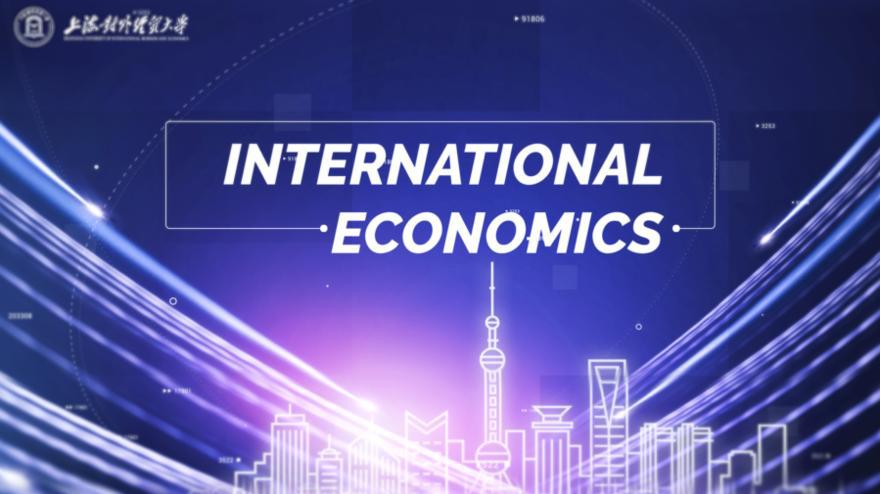Overview
This course deals with economic activities and interactions related to the countries of the world. It aims to introduce the principles and laws in international trade and finance, and teach the tools and techniques for analyzing economic issues between different countries and assessing their policy implications. It contains several major topics: international trade theory, international trade policy, exchange rate and balance of payment analysis.
By covering the topics essential to an understanding of the global economy, the course is easily accessible for students majored in economics and alike, and all other students who wish to know about international economy. The course provides students with global perspectives on economic decisions, and develop a critical mind towards both economic theory and real-world problem related to international economics.
During the spreading period of COVID-19, more than 200 undrgraduates majored in international trade and economics participated in the "International Economics" online course and provided positive feedback.
Learning Outcomes
Upon successful completion of this course, it is expected that you will have acquired the following course specific learning outcomes.
1. Understand why countries trade.
2. Analyze thebenefits of trade using technical tools such asDemand and Supply curves.
3. Enable you to understand why different people have different opinions on globalization.
4. Understand why governments especially USA take measures to protect trade and predict when the governments prefer to adopt protective trade.
5. Use models to analyze the effect of trade tariff and regional cooperation.
6. Predict the currency exchange rates fluctuation trend.
7. Predict the government’s policy change when facing the balance of payment deficits.
Prescribed Textbook
Dominick Salvatore (2013). International Economics. 11th ed. Wiley.
Paul R. Krugman, Maurice Obstfeld, Marc Melitz (2017). International Economics Theory and Policy. 11th ed. Pearson.
1. The Law of Comparative Advantage
1.1 The Law of Comparative Advantage 1
1.2 The Law of Comparative Advantage 2
2.The Standard Theory of International Trade
2.1 The Standard Theory of International Trade and Terms of Trade
2.2 Basis for and Gains from Trade-Terms of Trade
3. Factor Endowments and the Heckscher–Ohlin Theory
3.1 Assumptions of the Theory
3.2 Factor Endowments and the Heckscher–Ohlin Theorem (H-O Theorem)
3.3 Factor–Price Equalization Theorem (H-O-S Theorem)
3.4 Income Distribution within Each Nation
3.5 The Leontief Paradox
4.Economies of Scale, Imperfect Competition, and International Trade
4.1 Economies of Scale and International Trade
4.2 Internal and External Economies of Scale
4.3 Internal Economies of Scale, Monopolistic Competition and Trade
4.4 External Economies of Scale and Trade
5.Trade Restrictions: Tariffs
5.1 Tariffs
5.2 Tariff Structure
6.Nontariff Trade Barriers and the New Protectionism
6.1 Import Quota
6.2 Volumtary Export Restraint
6.3 Export Subsidy
6.4 The Political Economy of Trade Protectionism
6.5 The Infant-Industry and Strategic Trade Policies
7. Economic Integration: Customs Unions and Free Trade Areas
7.1 Typology of Regional Economic Integration
7.2 Trade Creation
7.3 Trade Diversion
8.International Trade and Economic Development
8.1 Economic Growth in a Trading World
8.2 Development and Trade Strategies
9. International Movement of Factors
9.1 International Movement of Capital
9.2 International Movement of Labor
Mid-Term Examination
10. Balance of Payments
10.1 Meaning of Balance of Payments
10.2 Equiliebrium and Diseuilibrium of Balance of Payments
11. Foreign Exchange Markets and Exchange Rates
11.1 Foreign Exchange Market and Exchange Rate
11.2 Flexible and Fixed Exchange Rate
12. Exchange Rate Determination
12.1 Purchasing-Power Parity Theory
12.2 Monetary Approach to Exchange Rates Determination
12.3 Asset Market Model and Exchange Rates
13. The Price Adjustment Mechanism with Flexible and Fixed Exchange Rates
13.1 The Price Adjustment Mechanism with Flexible and Fixed Exchange Rates
13.2 Effect of Exchange Rate Changes on Domestic Prices and Terms of Trade, Stability of Foreign Exchange Market
13.3 Elasticities in the Real World
13.4 Adjustment Under the Gold System
14. The Income Adjustment Mechanism and Synthesis of Automatic Adjustments
14.1 Income Determination in a Closed Economy
14.2 Income Determination in a Small Open Economy and Foreign Repercussions
14.3 Absorption Approach and Monetary Adjustments and Synthesis of the Automatic Adjustments
15. Open-Economy Macroeconomics
15.1 Internal & External Balance and Swan Diagram
15.2 IS-LM-BP Model
15.3 Fiscal and Monetary Policy with Fixed and Flexible Exchange Rate
Final Examination


